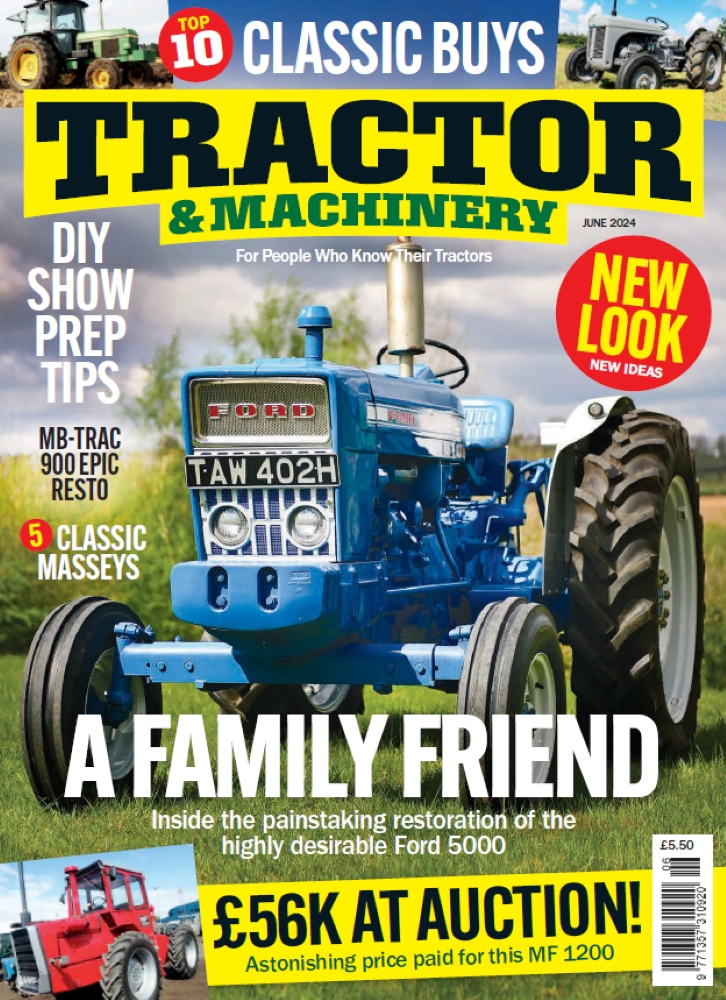We sample the engineering treats on offer at ListerFest 2024
Posted by Chris Graham on 30th July 2024
Barry Job reports on the fantastic variety of machinery on display at ListerFest 2024, which took place at the Apedale Valley Light Railway.

ListerFest 2024: A Lister Auto-Truck where the self-contained mono-wheeled power unit and the solid-tyred load-carrying trailer can be clearly seen.
Held over the weekend of 18th and 19th May, this celebration of all things Lister-powered was eagerly awaited by narrow gauge railway and stationary engine enthusiasts alike.
The venue was the Apedale Valley Light Railway, Chesterton, Staffordshire, operated by the Moseley Railway Trust. The railway runs alongside the Apedale Community Country Park and is home to a major collection of industrial narrow gauge locomotives and rolling stock. On site is the Apedale Heritage Centre incorporating a cafe and excellent museum; alongside is a drift coal mine which gives guided tours.
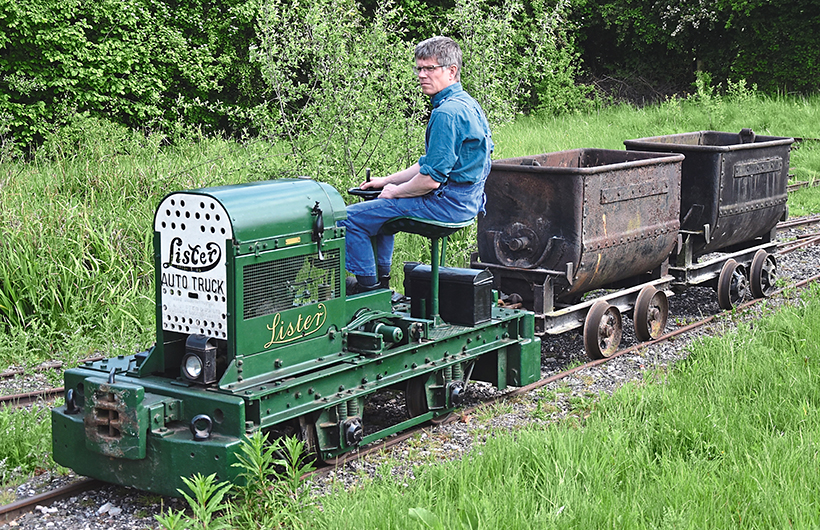
A Rail-Truck pulled two side-tipping wagons, the side seating position, hand brake wheel and simple suspension can be seen. The locomotives were painted Brunswick Green, although the cast iron grille was often painted white to improve its visibility.
In spite of extensive planning and preparation, the run-up to the weekend saw the inevitable last-minute tasks. These included driving in the ‘Golden Spike’ to complete the field-railway running around the exhibition field. This was a significant improvement on the previous restrictive ‘there and back’ arrangement. Also two of the younger volunteers restored, in record time, two wagons ex-Lindow Moss Peat Works, Wilmslow, from rusty chassis to operational condition. In the preceding weeks, numerous Lister locomotives were arriving, the final total was five Auto-Trucks, 20 Rail-Trucks, a road roller, a crane, a winch plus a range of stationary engines.
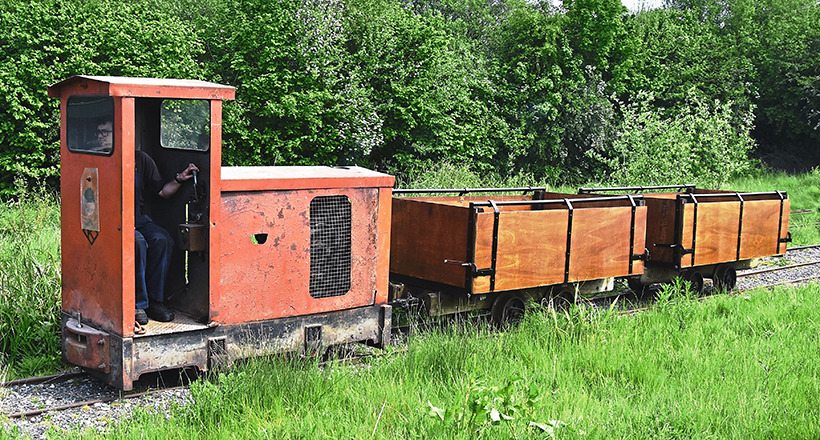
This locomotive, s/n 4, was made by Alan Keef Ltd in 1979 with a Lister ST 2 diesel engine; it worked at Lindow Moss Peat Workings, Wilmslow, and here pulled two of their recently-restored peat wagons.
In the 1920s, a number of manufacturers were designing lightweight tractor units for moving small loads. The most successful was Auto Mowers Ltd of Somerset. They were Lister agents; Listers acquired an Auto-Truck (which could be spelt without the hyphen) for moving castings from their foundry to the machine shop. In 1926, realising their potential, they began to manufacture them under licence although still retaining the 600 cc JAP air-cooled side-valve engine.

Lister-Blackstone built this locomotive, s/n 50888, in 1959; powered by a Lister TS 3 diesel engine it worked at the Eclipse Peat Works, Somerset, where it was fitted with rudimentary weather protection.
They were a mono-wheel design with everything required for motive power carried above the single front wheel. Hence the air-cooled engine; this was to reduce top-end weight as the Truck had the potential to topple over when driven across a slope. It towed a two-wheeled trailer for load carrying and balance. Thus they were simple and maneuverable, the engine unit being capable of being rotated through 360 degrees.
They had two forward gears and one reverse, the driver, seated on a bicycle seat, had to look over his shoulder when travelling backwards. Fitted with solid rubber tyres, they were very popular in heavy industrial settings plus parcel depots, goods yards and railway stations. They could even be fitted with pneumatic tyres and registered for road use. Production declined in the 1970s, ceasing completely in the 1990s.
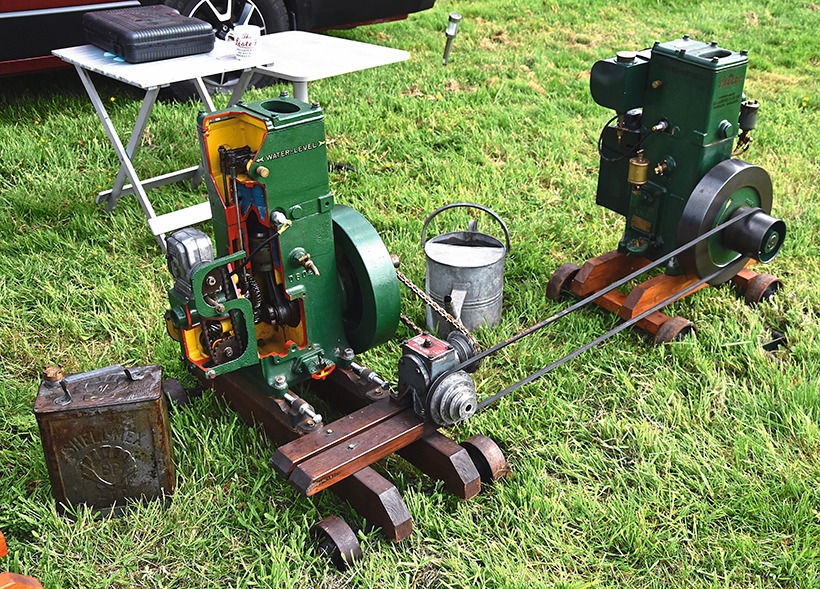
Darren Cartwright’s 1939 specification 26 Lister, s/n 156288, originally delivered to Liner Concrete of Newcastle-upon-Tyne, now drives his sectioned Lister D.
Listers realised that the Auto-Truck mechanism could be used for a small narrow gauge locomotive which they called the Rail-Truck although many still carried the cast iron grille carrying the ‘Auto-Truck’ name. Producing their first in 1928, they were suitable for running on temporary or poorly laid track; they found employment in construction sites, water-works, small quarries and peat cutting works. Initially fitted with the JAP engine, they were later fitted with a Lister single, twin or triple cylinder diesel engine.
Again they had two forward gears and one reverse with a top speed of six mph. The driver now sat sideways on a pressed-steel seat. They created a lot of interest at ListerFest processing around the field railway; they were also used alternately with the 1917 Kerr Stuart steam locomotive ‘Stanhope’ to haul passenger trains along the main line, albeit double-headed with the Trust’s 1960 three-cylindered Lister locomotive of 12 hp to provide additional power, but crucially air-brake control for the coaches.
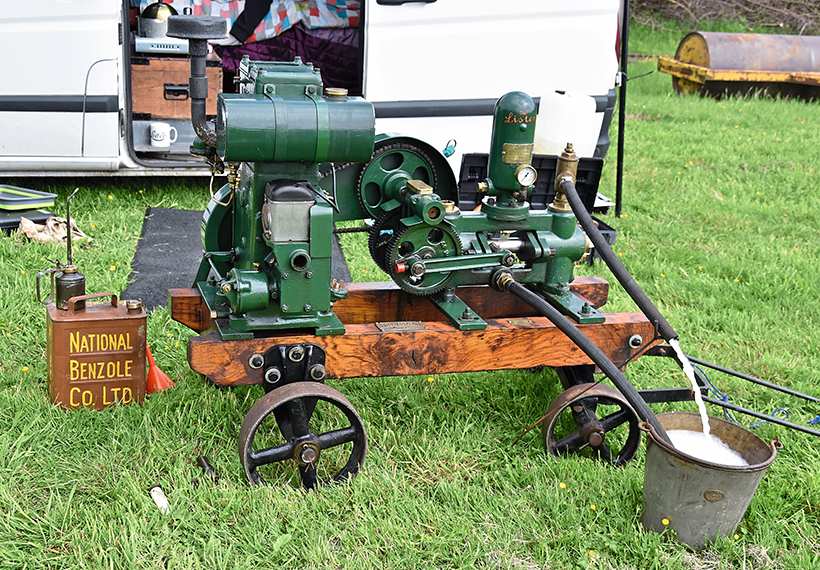
Paul Goldsmith exhibited his Lister pumping set powered by a 1939 Lister, s/n 193277.
Tom Bonewell’s 1960 winch was mounted on a twin-axle trailer and was on the exhibition field alongside the stationary engines. Its three-cylinder diesel engine developed just over 25 hp which had an impressive exhaust sound. It drove the five ton Auto Mower winch via a chain. Close by was Darren Cartwright’s 1939 Lister D driving through a reduction gearbox to a Lister D sectioned to show the workings of these engines.
Not only had railway enthusiasts traveled long distances to attend, Lister devotee Paul Goldsmith had brought his Lister pumping set all the way from the east coast of Suffolk to be there. Henry Johnson was also exhibiting a Lister pump, this time powered by a flat belt from his Lister D. With comprehensive ‘Information Boards’ it was an excellent display at this, his first rally.
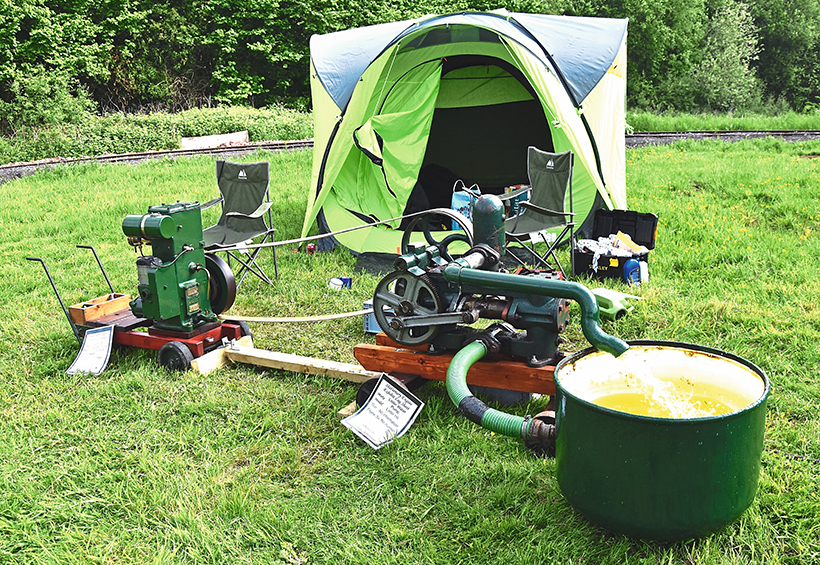
This 1949 Lister D, s/n 1/39952, brought along by Henry Johnson, is much travelled being sold to agricultural engineers Farm Industries of Truro, then moving to the Isle of Wight and then to Portsmouth.
This event was certainly something different. Will the Moseley Railway Trust be putting on ListerFest again next year? At the time of writing they are being non-committal, but, considering its success, it must be very likely. For more information on the railway see www.avlr.org.uk
This feature comes from the latest issue of Stationary Engine, and you can get a money-saving subscription to this magazine simply by clicking HERE

Previous Post
Classic commercials at Faversham Festival of Transport
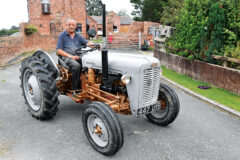
Next Post
Superbly restored 1957 Ferguson 35



